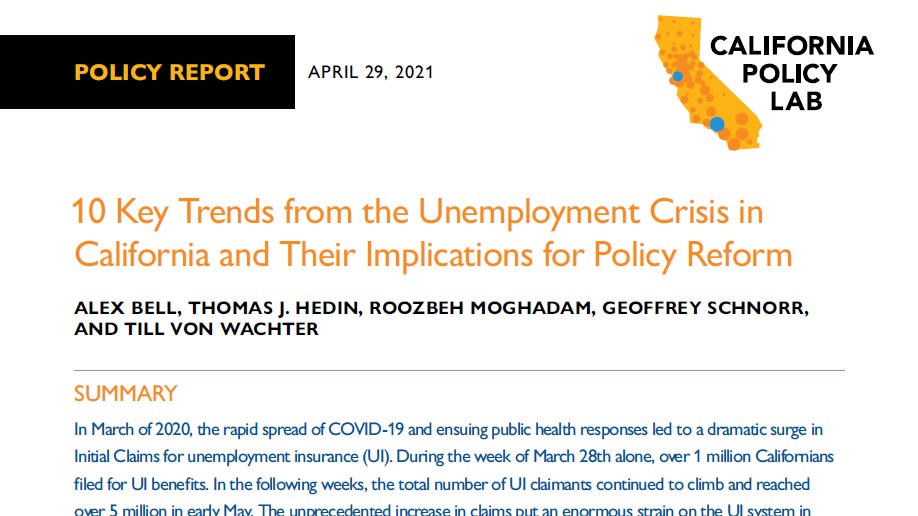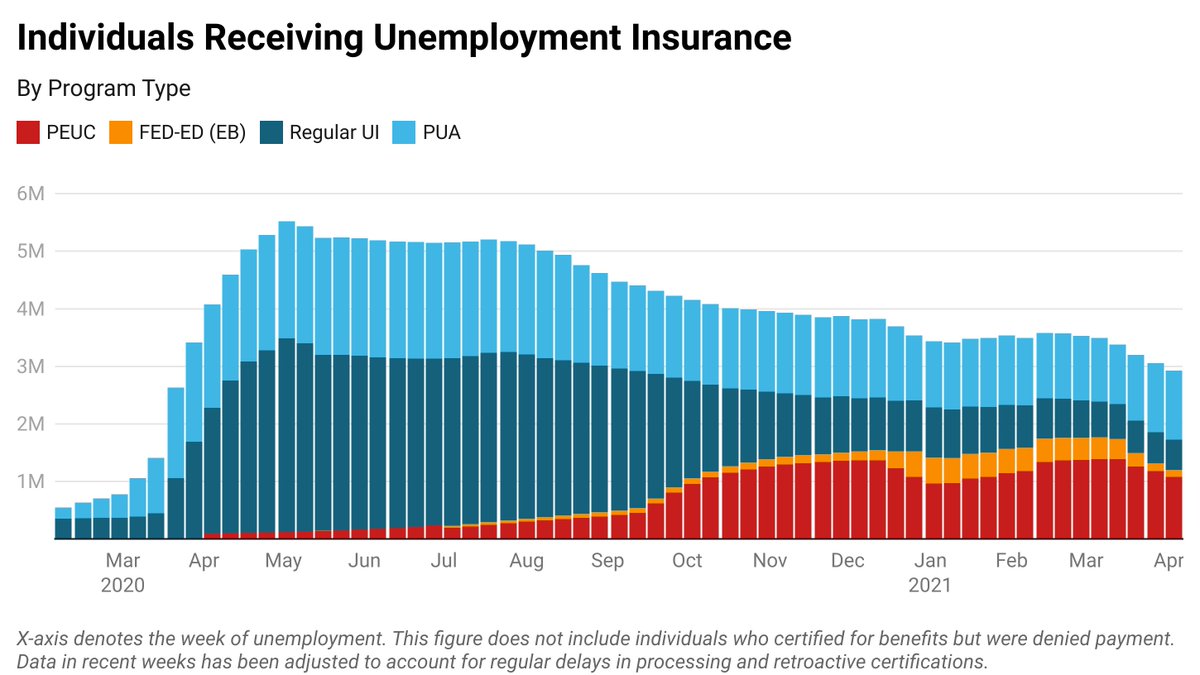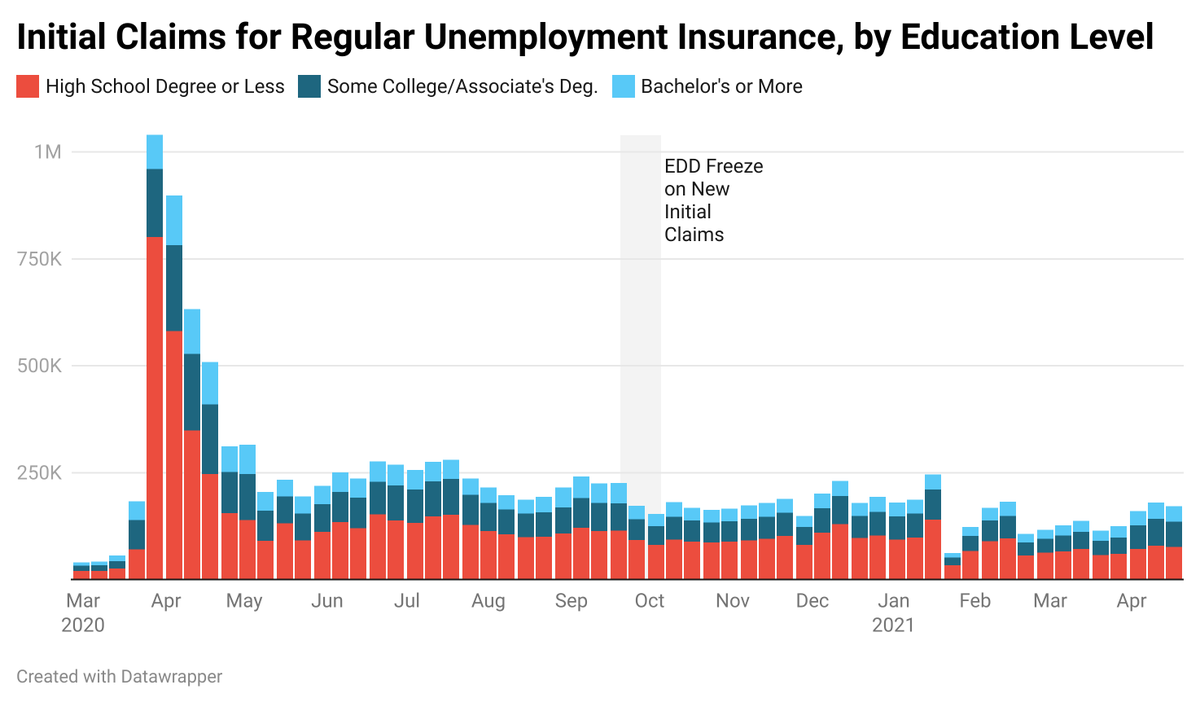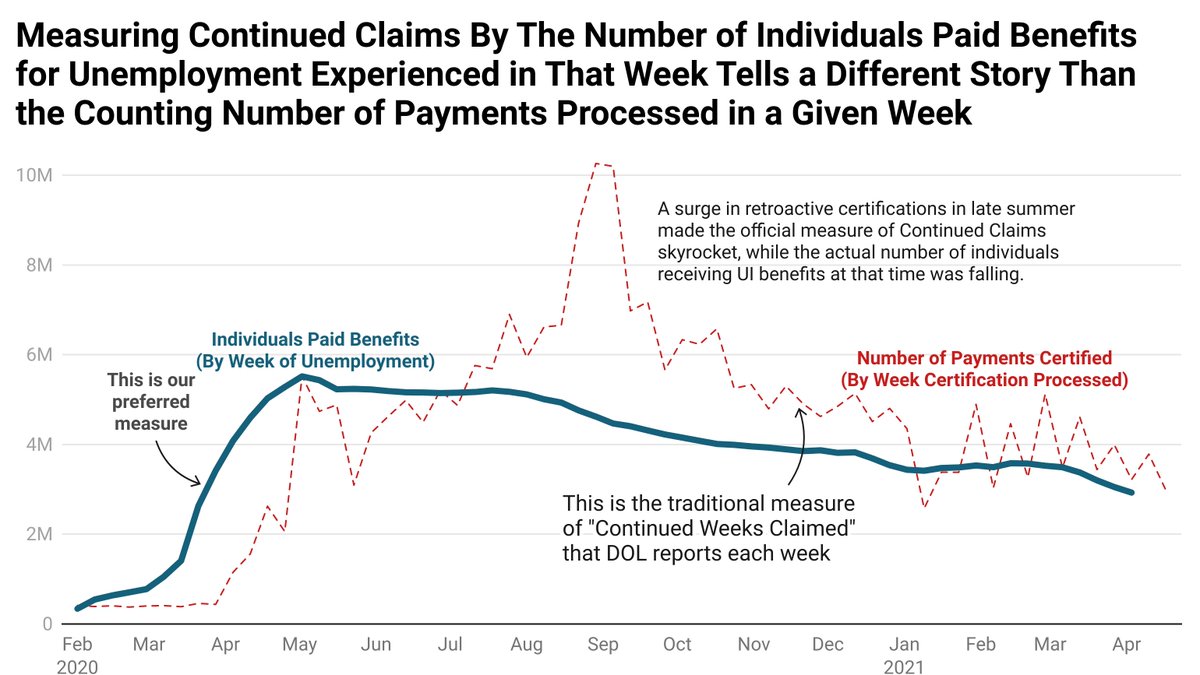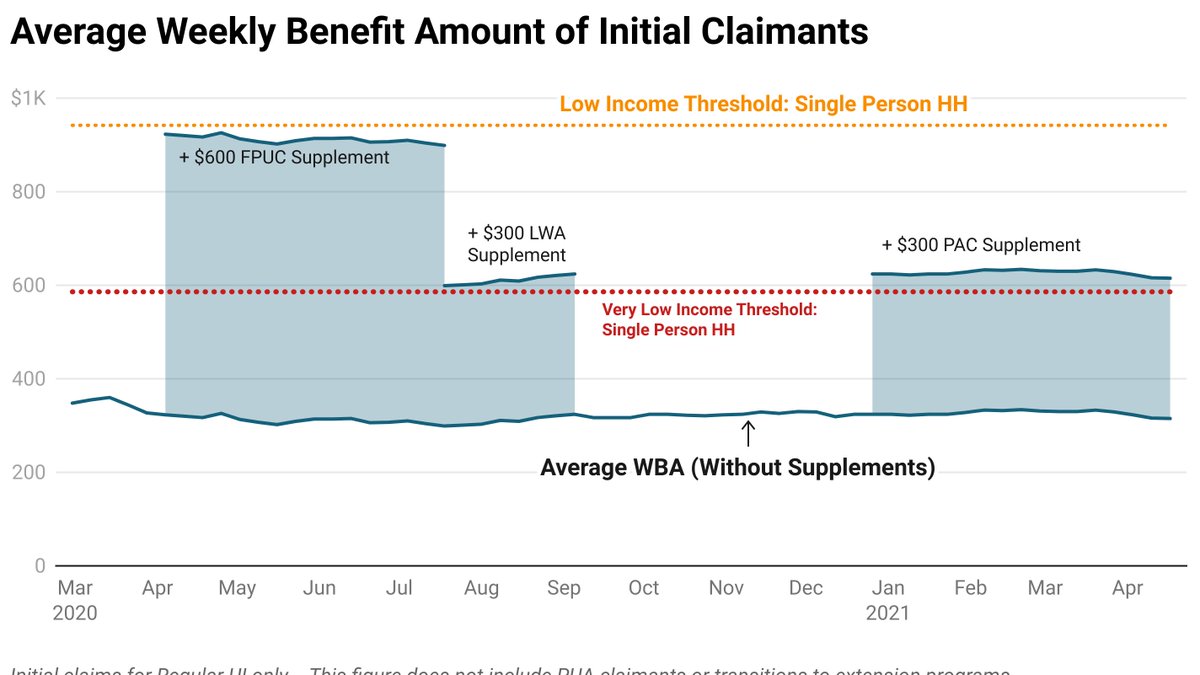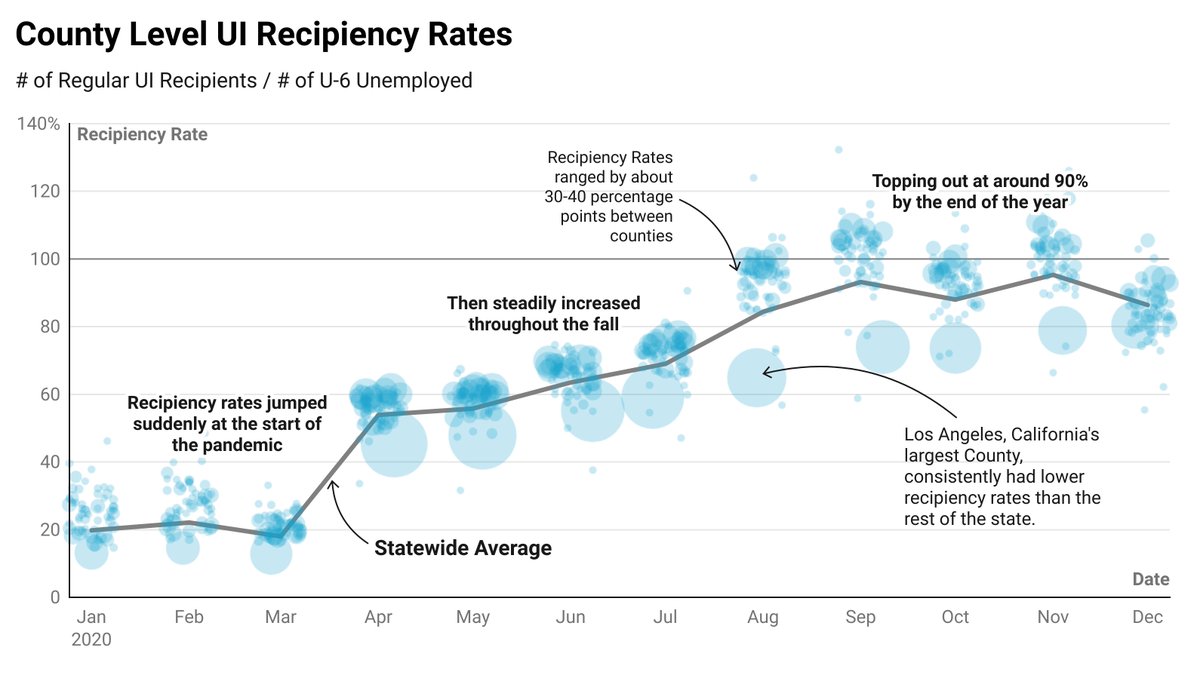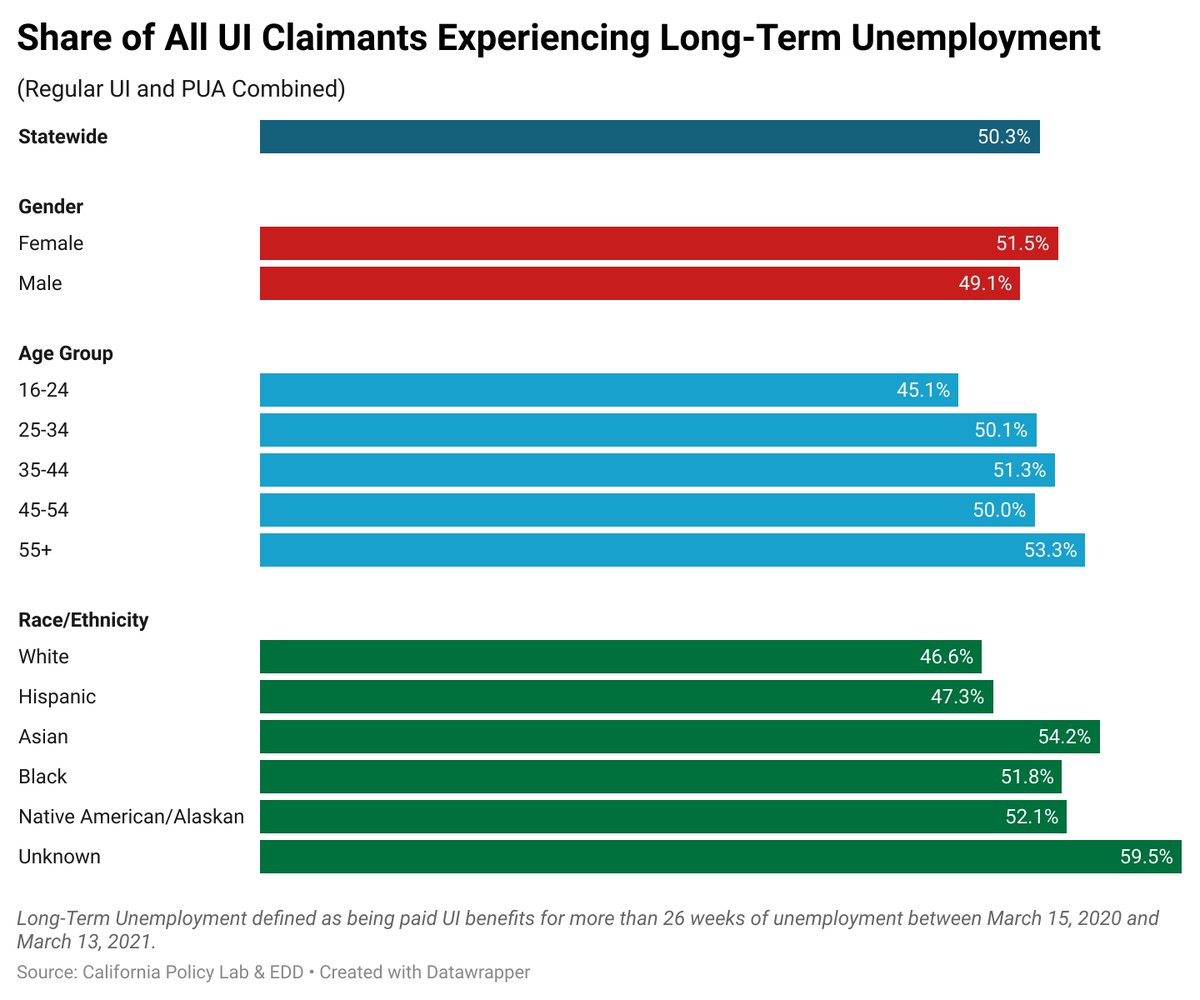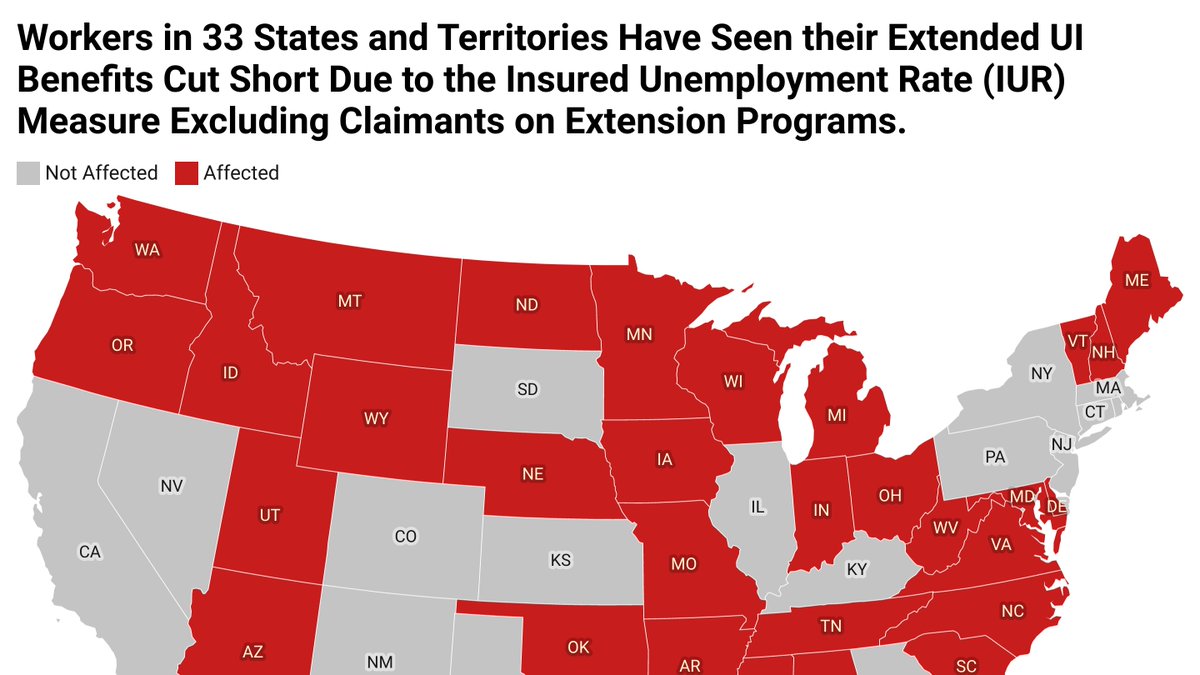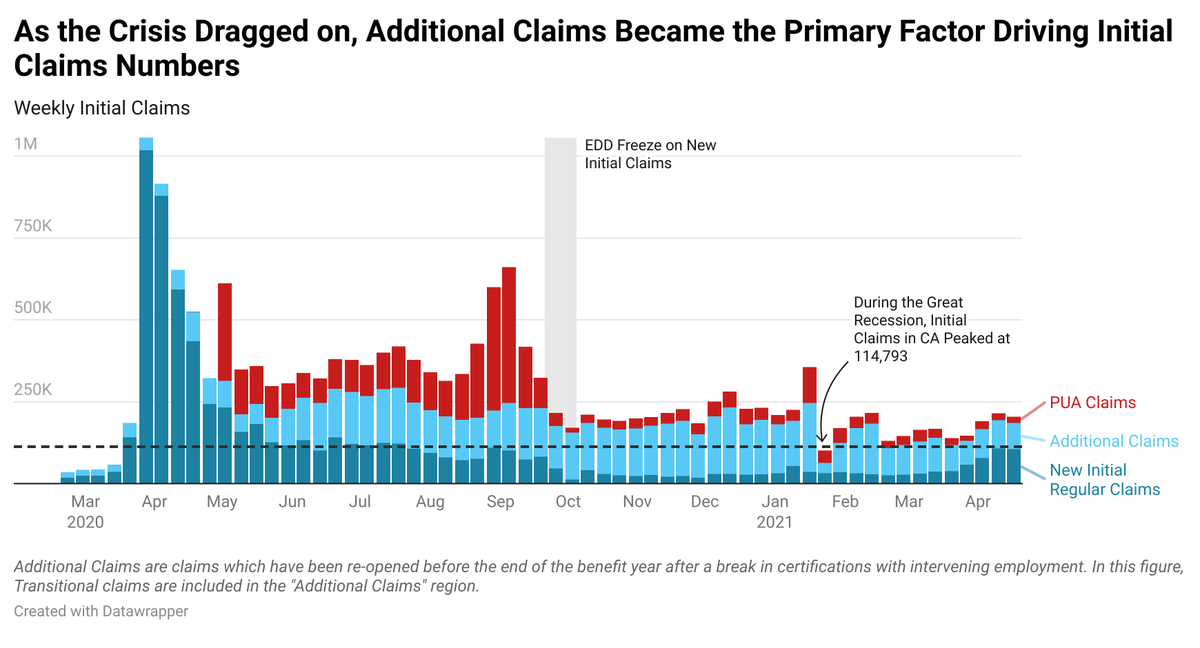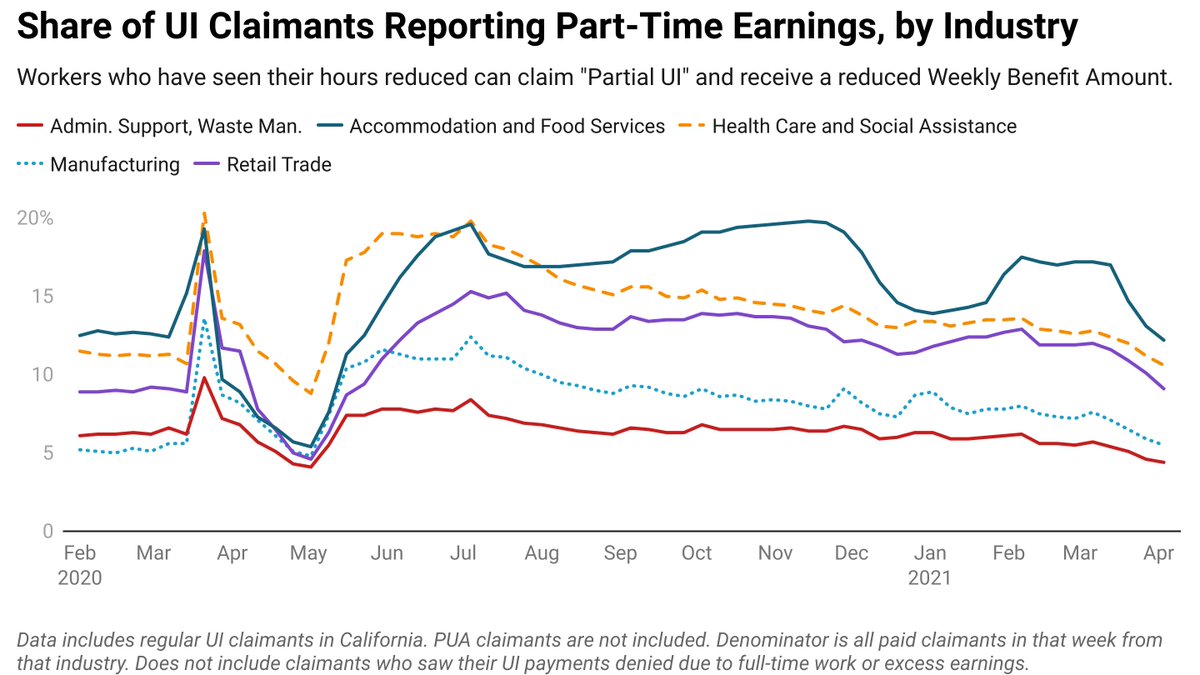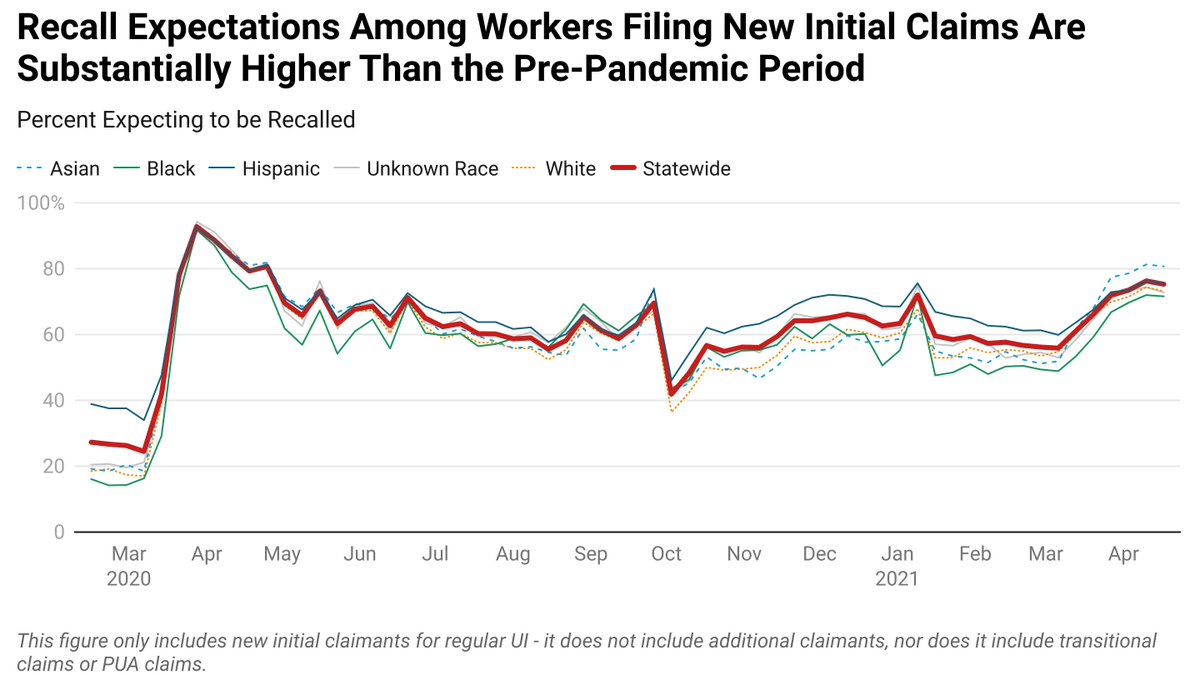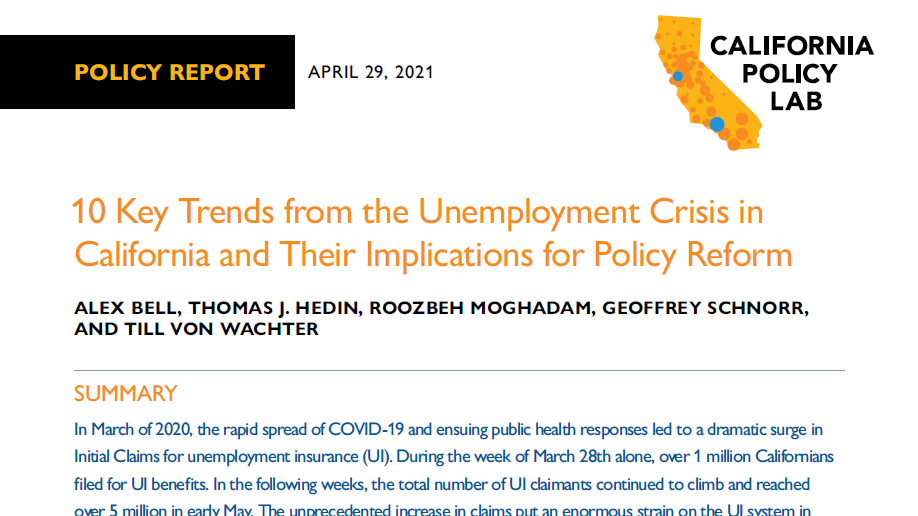Today is the 1 year anniversary of CPL& #39;s 1st UI Report, released April 29th, 2020. Since then, our team ( @alexbellecon @TJ_Hedin Roozbeh Moghadam, Geoff Schnorr, & @TillvonWachter) has written 15 more pieces, shedding light on the unemployment crisis in real time. Thread: (1/14)
Today, CPL releases our 17th analysis, looking back at what we& #39;ve learned from a year of analyzing UI claims data -> What are the 10 key trends to know about the #COVID19 unemployment crisis in California and what do they mean for UI reforms? http://bit.ly/KeyTrendsUI
(2/14)">https://bit.ly/KeyTrends...
(2/14)">https://bit.ly/KeyTrends...
Fact 1: Benefit Extension programs are increasingly important. In fact, 70% of California claimants who received regular UI at the beginning of April 2021, received benefits thru either PEUC or Fed-Ed.
http://bit.ly/KeyTrendsUI ">https://bit.ly/KeyTrends... (3/14)
http://bit.ly/KeyTrendsUI ">https://bit.ly/KeyTrends... (3/14)
Fact 2: The COVID-19 crisis has disproportionately impacted less educated workers, workers of color, and women: http://bit.ly/KeyTrendsUI ">https://bit.ly/KeyTrends... (4/14)
Fact 3: The official measure of “Continued Claims” is sensitive to processing delays + retroactive certifications. CPL& #39;s new measure of UI receipt-the number of individuals paid benefits by the week in which they experienced unemployment- is more economically meaningful (5/14)
Fact 4: The UI system was not meant to support low-wage workers with little savings over extended periods of time. Federal UI benefit supplements (FPUC, LWA, and PAC) made an important difference for workers struggling to make ends meet. http://bit.ly/KeyTrendsUI ">https://bit.ly/KeyTrends... (6/14)
Fact 5: The UI recipiency rate (the share of unemployed workers who receive UI benefits) has risen substantially in California during the crisis, and is well above levels seen in past recessions. However, there were substantial differences in recipiency between counties (7/14)
Fact 6: A large and growing number of vulnerable workers have experienced long-term unemployment, putting them at risk of adverse consequences, including lasting income reductions, poverty and challenges with ever returning to work. http://bit.ly/KeyTrendsUI ">https://bit.ly/KeyTrends... (8/14)
Fact 7: Extended Unemployment Benefits (EB) are supposed to help workers during long-term downturns like this crisis, but the current trigger system (which determines when EB turns on/off) puts long-term UI recipients at risk of having their benefits cut off prematurely. (9/14)
Fact 8: Initial claims have remained above historic levels as the crisis drags on, in part because of additional claims: claims which have been re-opened after a claimant has had a break in certifications with intervening work. http://bit.ly/KeyTrendsUI ">https://bit.ly/KeyTrends... (10/14)
Fact 9: A sizeable share of UI claimants have still been working reduced hours, allowing them to continue receiving partial UI benefits. This implies workers & employers have remained connected-which has important implications for how the UI system should be structured. (11/14)
Fact 10: Throughout the crisis, a large (and recently increasing) fraction of workers filing new claims reported that they expect to be recalled to their prior job, suggesting that some layoffs could be temporary, not permanent. http://bit.ly/KeyTrendsUI ">https://bit.ly/KeyTrends... (12/14)
Our report page outlines 7 policy recs based on these findings. The recs, report, and interactive versions of the figures in this thread, can be found here: http://bit.ly/KeyTrendsUI ">https://bit.ly/KeyTrends... (13/14)
Preview of recs (sep. https://abs.twimg.com/emoji/v2/... draggable="false" alt="🧵" title="Thread" aria-label="Emoji: Thread">to follow):
https://abs.twimg.com/emoji/v2/... draggable="false" alt="🧵" title="Thread" aria-label="Emoji: Thread">to follow):
-Reform Extended Benefits
-Make Work Sharing more accessible
-Raise partial UI earnings disregard
-Modernize state UI computer systems
-Research impacts of new UI programs
-Data: Increase access and uniformity
http://bit.ly/KeyTrendsUI ">https://bit.ly/KeyTrends... (14/14) End
-Reform Extended Benefits
-Make Work Sharing more accessible
-Raise partial UI earnings disregard
-Modernize state UI computer systems
-Research impacts of new UI programs
-Data: Increase access and uniformity
http://bit.ly/KeyTrendsUI ">https://bit.ly/KeyTrends... (14/14) End

 Read on Twitter
Read on Twitter
